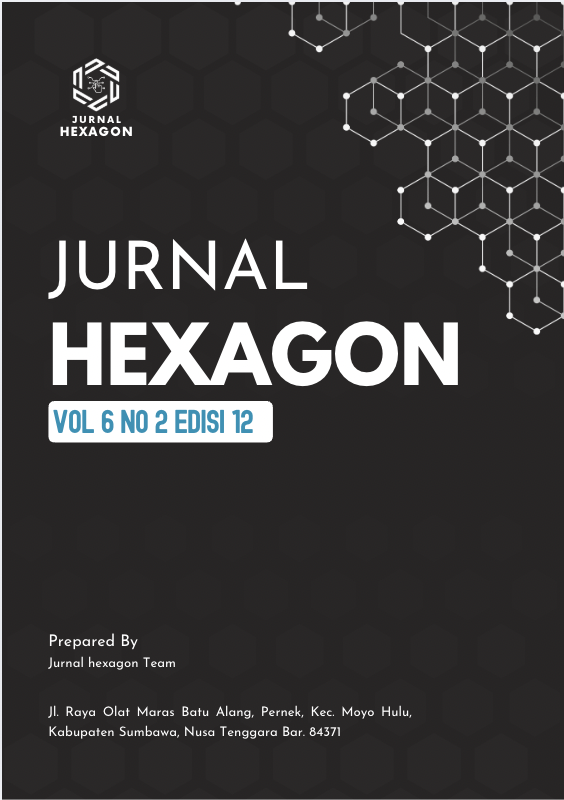ANALISIS PENGARUH KOMPOSISI CAMPURAN BAHAN TERHADAP KARAKTERISTIK FISIKO-MEKANIS AGREGAT RINGAN BUATAN DENGAN METODE SINTERING
Keywords:
Artificial lightweight aggregates, Variation of composition, Physical Properties, Mechanical PropertiesAbstract
Lightweight aggregate is well-known due to its low density, porous structure, and fire resistance. Numerous studies have been conducted to develop artificial lightweight aggregates with specific characteristics, such as high compressive strength and porosity, while maintaining low water absorption and density, depending on the applications. Artificial lightweight aggregates are formed from materials containing SiO?, Al?O?, and Fe?O?, with additional compounds like carbonates that release gas during heating, resulting in a porous structure. Each compound plays a specific role in determining the characteristics of the resulting aggregate. Therefore, this study explores the variations in composition during the synthesis of lightweight aggregates by mixing castable refractory waste as a source of Al?O?, sand as a source of SiO? and Fe?O?, and dolomite as a source of MgO and CaCO?. The synthesis was carried out using a sintering method at 1200°C to examine the effect on the physical and mechanical properties. Lightweight aggregates were successfully synthesized, and all variations exhibited a density of less than 1.2 g/cm³. A significant correlation was found between the contents of SiO?, Al?O?, and CaCO? and the aggregate’s density, compressive strength, and water absorption. Sample C54, with a high content of castable refractory waste, showed the most favorable properties, with a low density of 0.68 g/cm³, high compressive strength of 16.10 MPa, and low water absorption of 7.2%.
References
Ajrina, S. G., Saidi, T., & Muttaqin. (2021). Pengaruh Agregat Kasar Ringan Buatan dari Tanah Diatomae pada Beton Ringan Struktural terhadap Nilai Kuat Tarik Belah. Journal of the Civil Engineering Student, 3(2), 176-183.
Ayati, B., Ferrandiz-Mas, V., Newport, D., & Cheeseman, C. (2018). Use of clay in the manufacture of lightweight aggregate. Construction and Building Materials, 162, 124-131.
Badan Pusat Statistik. (2024). KONSTRUKSI DALAM ANGKA 2024 (Vol. 13). Indonesia: Badan Pusat Statistik.
Cao, Q., Nawaz, U., Jiang, X., Z. L., & Ansari, W. S. (2022). Effect of air-cooled blast furnace slag aggregate on mechanical properties of ultra-high-performance concrete. Case Studies in Construction Materials, 16(e01027), 1-15.
Hao, D. L., Razak, R. A., Kheimi, M., Yahya, Z., Abdullah, M. M., Burduhos Nergis, D. D., . . . Abdullah, A. (2022). Artificial Lightweight Aggregates Made from Pozzolanic Material: A Review on the Method, Physical and Mechanical Properties, Thermal and Microstructure. Materials, 15(11), 3929.
Liu, M., Liu, X., Wang, W., Guo, J., Zhang, L., & & Zhang, H. (2017). Effect of SiO2 and Al2O3 on characteristics of lightweight aggregate made from sewage sludge and river sediment. Ceramics International, 44(4), 4313–4319.
Moreno-Maroto, J. M., Cobo-Ceacero, C. J., Uceda-Rodríguez, M., Cotes-Palomino, T., Martínez García, C., & Alonso-Azcárate, J. (2020). Unraveling the expansion mechanism in lightweight aggregates: Demonstrating that bloating barely requires gas. Construction and Building Materials, 247(118583), 1-10.
Papadopoulos, D., Omar, H., Stergioudi, F., Tsipas, S., & Michailidis, N. (2011). The use of dolomite as foaming agent and its effect on the microstructure of aluminium metal foams—Comparison to titanium hydride. Colloids and Surfaces A: Physicochemical and Engineering Aspects, 382(1-3), 118-123.
Punlert, S., Laoratanakul, P., Kongdee, R., & Suntako, R. (2017). Effect of lightweight aggregates prepared from fly ash on lightweight concrete performances. Siam Physics Congress 2017 (pp. 1-4). Journal of Physics Conference Series.
Rosyidi, D. H., Sulton, M., & Risdanareni, P. (2023). Durabilitas beton yang mengandung agregat ringan buatan berbahan dasar abu terbang (fly ash). PADURAKSA Jurnal Teknik Sipil Universitas Warmadewa, 11(1), 13-17.
Ruman, S. R., Morshed, A., & Sarkar, A. (2024). ARTIFICIAL LIGHTWEIGHT AGGREGATE PRODUCTION FROM RICE HUSK AND RICE HUSK ASH. 7thInternational Conference on Civil Engineering for Sustainable Development (ICCESD2024).
Stempkowska, A., & Gawenda, T. (2024). Artificial lightweight aggregate made from alternative and waste raw materials, hardened using the hybrid method. Scientific Report, 14(16880), 1-19.
Tsai, C. -C., Wang, K. -S., & Chiou, I. -J. (2006). Effect of SiO2–Al2O3–flux ratio change on the bloating characteristics of lightweight aggregate material produced from recycled sewage sludge. Journal of Hazardous Materials, 134(1-3), 87-93.
V.D. Zhuravlev, V., Komolikov, Y. I., & Ermakova, L. V. (2016). Correlations among sintering temperature, shrinkage, and open porosity of 3.5 YSZ/Al2O3 composites. Ceramics International, 42(7), 8005-8009.
Waichi, Kobayashi, & Kazuhiro. (1986). Patent No. C04B18/027.
Wang, J., Zheng, K., Cui, N., Cheng, X., Ren, K., Hou, P., . . . Xie, N. (2020). Green and Durable Lightweight Aggregate Concrete: The Role of Waste and Recycled Materials. Materials, 13 (13)(3041), 1-24.
da Silva Neto, J. A., dos Anjos, M. A., Dutra, R. P., Mendonça de Souza, M., & Pederneiras, C. M. (2025). Development of Sustainable Artificial Lightweight Aggregates with Binary Mixtures of Waste Rich in Aluminosilicate and Carbonate in Kaolinitic Clay. Sustainability, 17(5).
Published
Issue
Section
Copyright (c) 1970 Hexagon

This work is licensed under a Creative Commons Attribution 4.0 International License.



